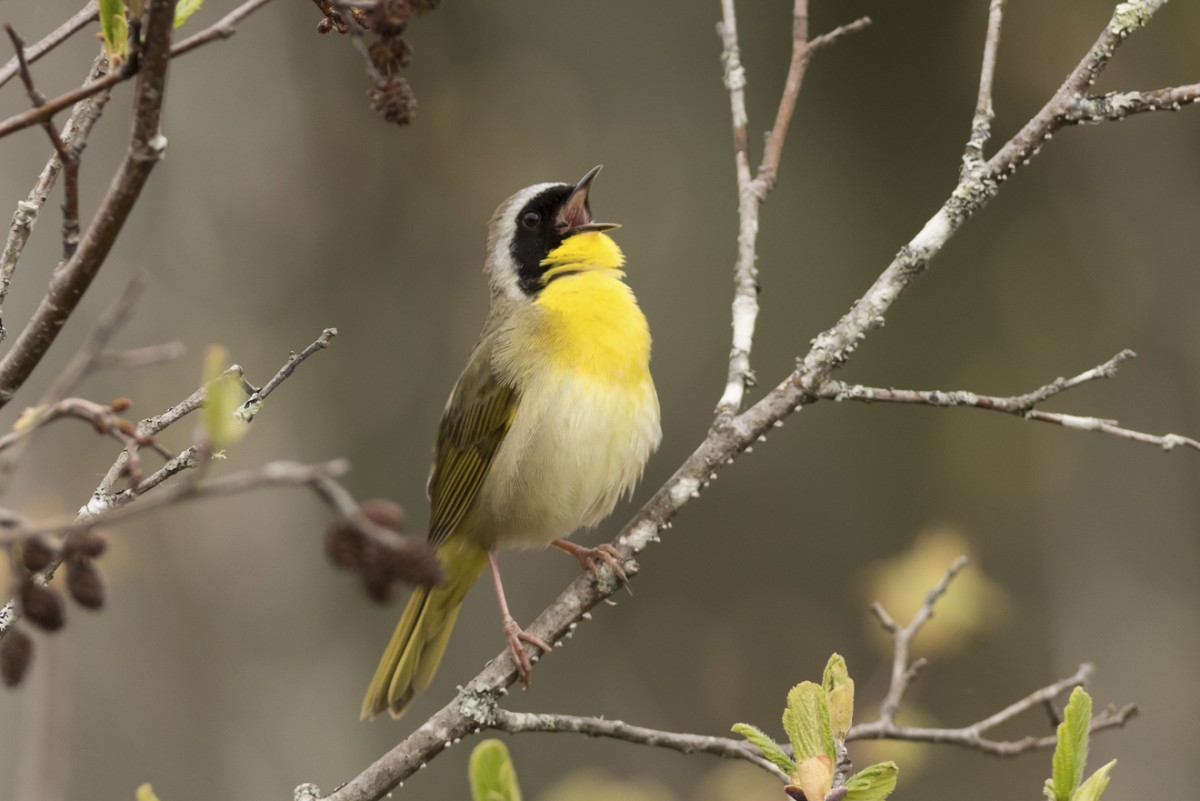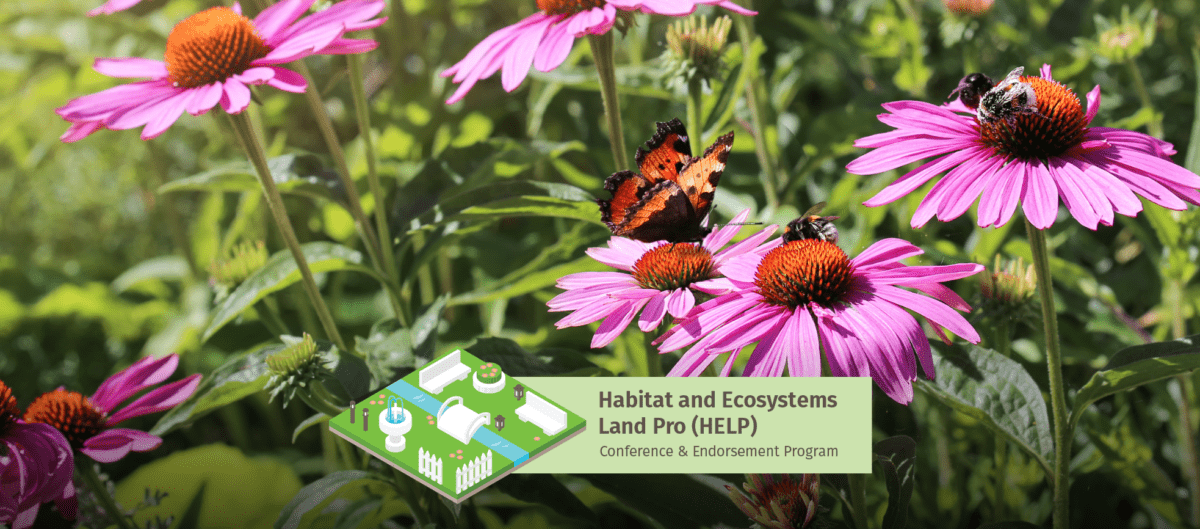November 2009
Good News from Albany for a Change —
On Oct. 13, NY Governor David Paterson signed the Green Jobs/Green New York Act into law, following passage by overwhelming margins in both houses of the state legislature.
This legislation provides for creation of jobs in the state that will reduce energy use and costs for citizens and small businesses. It includes revolving loans and green jobs training programs for weatherization projects.
The loan program is expected to attract middle-class homeowners and small businesses that will pay back the loans from money saved on their energy bills. Maximum loans will be $13,000 for residential properties and $26,000 for commercial properties.
The job training component will focus on new and displaced workers. Community based organizations qualify to administer the training programs and must go through a competitive procurement process. The state has a new website for those seeking green jobs: www.greencareersny.com.
The weatherization loans will be funded through a portion of the $112 million collected from Regional Greenhouse Gas Initiative auctions. During the auctions, businesses buy carbon emissions credits.
A separate Weatherization Assistance Program funded through the federal stimulus package is expected to provide New York with $384 million to weatherize 45,000 homes.
Gov. Paterson’s stated goal is to retrofit 1 million homes in the next five years. This effort helps the economy and the environment, and will save dollars and greenhouse gases.
What you can do —
Thank Gov. Paterson and your state representatives for this forward-looking action. This is an example of how the state can take the lead in addressing global warming.
Companies Taking a Fresh Look at Climate Change —
Something of a schism is taking place within the US Chamber of Commerce — the pro-business organization that is strongly opposing federal legislation to address climate change. A number of notable Chamber member corporations have broken ranks and left the group due to its stance. These include Apple, Nike, and even General Electric and several major utility companies.
One “green” company that has not taken this step is Toyota, maker of the Prius hybrid auto and sponsor of a series of environmental programs through National Audubon.
There is an effort on to let Toyota know that their split personality on this matter is unacceptable, and to get them to join others in bolting the Chamber of Commerce.
The Chamber’s lobbying efforts in Washington are funded by the dues paid by its members, so Toyota is essentially contributing to stopping an effort to reduce greenhouse gases, while profiting from its image and sales to buyers making a commitment to limit their own carbon footprint.
What you can do —
Let Toyota know that they need to state their true principles and act on them by leaving the Chamber of Commerce. If you are a Toyota owner, make sure they know, and that climate change is a concern to you. They can be contacted at 800-331-4331; through their web site, www.toyota.com; or by writing Chairman Yoshimi Inaba, Toyota Motor Sales, U.S.A., Inc., 19001 South Western Ave., Torrance, CA 90501.
Energy / Climate Change Next in Washington? —
With health care legislation dominating the agenda in Congress, it would seem there are no other issues being addressed. However, there is significant movement on facing up to the nation’s need to realign its energy usage in order to reduce our immense carbon footprint.
In June the House passed the American Clean Energy And Security Act that includes a cap-and-trade global warming reduction plan to reduce economy-wide greenhouse gas emissions 17 percent by 2020. Other provisions include new renewable requirements for utilities, studies and incentives regarding new carbon capture and sequestration technologies, energy efficiency incentives for homes and buildings, and grants for green jobs, among other things.
Although not perfect legislation, the act is considered a giant step in moving America towards a more energy efficient future and making a dent in the power plant and auto emissions that bring about global warming.
However, the US Senate has not yet acted on similar legislation, and opponents are expected to put up a strong fight in that body. Also in June, the Senate Energy and Natural Resources Committee reported out weaker energy legislation that would increase gas and oil production and not mandate greenhouse gas reductions. Other Senate legislation would enact such mandates. It is expected the Senate will take up energy legislation this fall.
What you can do —
Contact US Senators Charles Schumer and Kirsten Gillibrand and urge them to work for strong climate legislation when the Senate takes up energy legislation. Tell them the threats from climate change are right here in NY and that you expect them to stand up for the state’s interests. Saveourenvironment.org has an easy way to contact senators on this issue.
Oneonta to Choose New Mayor —
The City of Oneonta will vote on a new mayor in November, and the choice will make a difference in such issues as open space, green living, and energy. It appears there will be three candidates on the ballot: Democrats Jason Corrigan and Dick Miller, and Republican Erik Miller. All have expressed support for the environment as part of their campaigns.
Jason Corrigan has made support of the rail system passing through the city one of his key points. He has proposed a commuter rail line from Albany to Binghamton to service Oneonta and other communities. He also calls for using solar panels on city buildings to reduce energy costs and pollution.
As part of his platform, Dick Miller states that, as mayor, he would: “Assure that in every decision made that sustainable practices, and environmental implications are always given careful consideration.”
Erik Miller has the most extensive environmental track record of the candidates. He has served as Director of the Otsego County Planning Department, and is currently Executive Director of the Otsego County Conservation Association. In the latter position, he has advocated for protection of Otsego Lake, sustainable agriculture, and expanding area trail systems, as well as strong oversight of natural gas drilling in the area.
What you can do —
If you are a city resident, inform yourself about the candidates and where they stand on the environment, and most important — vote on Nov. 3!
Governor Paterson uses Executive Order to Target Environmental and Health Regulations —
In early August NY Governor David A. Paterson issued an Executive Order that would allow a handpicked group of top aides to repeal state regulations they deem outdated or overly burdensome to businesses.
This action puts in place a policy that met with strong opposition when a draft was found by the media last year. Environmental and public health advocates in particular feared the governor was targeting clean air and global warming rules at the behest of industry groups.
The draft has now become reality, and predictably has been praised by those such as the Business Council of NY State as needed to “remove obstacles to … growth” in the state.
The order creates a select committee of five senior members of the Governor’s cabinet who will review existing regulations, with environmental, health and safety agencies among the first to undergo this process.
Environmental leaders were particularly incensed as Paterson released the Executive Order one day after he proposed ambitious targets for reducing New York’s carbon emissions. The governor sought positive comments from these same leaders for the carbon announcement, but never mentioned his order planned for the following day that could undo the carbon goals.
What you can do —
Contact Governor Paterson and ask him to repeal Executive Order #25, and to not target important protections for the state’s citizens and its lands, air and water. An online message can be senthere.
Population – We Can’t Grow On Like This! —
Although the focus in Washington has been on health care reform and the Supreme Court nomination, other important issues continue to need attention from the White House and lawmakers.
One of these is population growth — here in the US and overseas. More people and the resources they demand has had major negative impacts on our environment. Dwindling water supplies, energy production, large-scale agriculture, and urban sprawl are just a few of the effects of rapidly expanding populations.
Scientists have documented declines in wildlife populations, including many bird species, due to competition for habitat with humans. This is particularly true in thirdworld countries where populations are increasing exponentially.
There are relatively easy ways to lessen population growth and, in turn, help the environment. Birth control education programs are needed in many poor countries, as are contraceptives. These countries request and appreciate such assistance, but programs have been cut in recent years due to pressure from conservative groups and a hands-off approach by the Bush administration.
Low cost and low tech development programs also reduce the pressure on poor families to have more children for economic reasons. Helping communities develop water supplies, improve subsistence agriculture and increase public health all provide a better quality of life that allows family planning to become a more realistic consideration in these areas.
What you can do —
Ask President Obama and your federal representatives to make population a priority and to fully fund programs to provide family planning information and techniques to countries that desire them. Not only will the globe’s health improve, but so will our nation’s security and standing in the world community.
A second strike for Obama on endangered wildlife —
The still young Obama administration in Washington has made another decision disregarding serious threats to an endangered species.
In early May, Secretary of the Interior Ken Salazar in effect endorsed the Bush administration’s policy of excluding the harmful effects of global warming on polar bears from consideration under the Endangered Species Act, claiming that a law protecting endangered species shouldn’t be used to take on the issue of climate change.
Earlier this year, Sec. Salazar had also gone along with Bush policy in delisting wolves in the northern Rockies from the Endangered Species Act (see the April edition of The Belted Kingfisher).
In the latest action, the Interior Department refused to rescind a rule that says actions that threaten the polar bear’s survival cannot be considered when safeguarding this iconic mammal, if they occur outside the bear’s Arctic home.
The Endangered Species Act requires that a threatened or endangered species must have its habitat protected. Environmentalists say that in the case of polar bears, the biggest threat comes from pollution–mainly carbon dioxide from faraway power plants, factories and cars–that is warming the Earth and melting Arctic sea ice.
Salazar’s predecessor in the Bush administration, Dirk Kempthorne, had issued a “special rule” that limited the scope of the bear’s protection to actions within its Arctic home. Obama’s Interior Dept. head has now agreed, stating “The Endangered Species Act is not the appropriate tool for us to deal with what is a global issue, and that is the issue of global warming.”
This decision leaves polar bears at risk to melting and breakup of the sea ice they depend upon to travel and feed. Scientists say as many as 15,000 could be lost in the coming decades because of the loss of Arctic sea ice, a key element of its habitat.
Salazar’s decision was praised by Republicans, including Alaska Governor Sarah Palin, who hailed the decision as a “clear victory for Alaska” because it should help North Slope oil and gas development.
Environmentalists, who had hoped for a significant change in approach to endangered wildlife from the Obama administration, see it differently. “For Salazar to adopt Bush’s polar bear extinction plan is confirming the worst fears of his tenure as Secretary of Interior” said Noah Greenwald, of the Center for Biological Diversity which, along with the Natural Resources Defense Council and Greenpeace, has a lawsuit challenging the bear rule.
On the wolf front, Idaho and Montana are moving ahead with plans to kill all but 300 – of an estimated total of 1,343 – of the wolves in those states, now that federal protection has been removed.
In Alaska, Gov. Palin’s aerial assault continues, with at least 84 wolves killed during a five day stretch in March, using helicopters, spotter planes and highpowered guns. So far, over 1,000 wolves have been chased down and shot by gunmen in low-flying aircraft in this scientifically unsound effort to increase game.
In Arizona, the population of the southwestern wolf, or “lobo”, is down to only 52 individuals in the wild – and only two breeding pairs. A female lobo was recently shot by a poacher and left along a roadside. Illegal shooting is the leading cause of documented loss of lobos.
What you can do —
Clearly wolves are still at risk, despite limited recovery in some areas. Inadequate governmental protection, legal and illegal hunting, and persecution by farmers and ranchers are all serious threats.
Polar bears face dramatic and unsurvivable alteration of their world from climate change.
Contact President Obama and Interior Secretary Salazar and urge them to reinstate protections for these animals. Tell them that our nation has a legal and moral responsibility to protect endangered species.
Ask your congressional representative to cosponsor the Protect America’s Wildlife Act, federal legislation to end the practice of using aircraft and gunmen to chase and kill wolves in Alaska. The state has abused its ability to manage wolf populations in engaging in wholesale aerial killing and must be reined in.
Better Bottle Bill passes! —
The NY State Legislature passed the 2009-10 budget in early April — a few days late, but the wait was worth it.
After a nine-year campaign, NY’s Bottle Bill was expanded, and will now include deposits on water bottles, including flavored water and nutritionally enhanced water — nearly a quarter of the beverages sold in the state. This will keep literally billions of bottles off roadsides and out of landfills and incinerators. The budget also included a provision to capture over $100 million in unclaimed bottle deposits for the state’s General Fund.
Environmental groups had pushed for an even broader expansion of the deposit law, to also include juice and sports drinks, but heavy last-minute lobbying from bottlers and distributors weakened the final version. However, water makes up over 70% of the non-carbonated beverages sold in the state, so this is a major improvement in bringing these containers into the recycling stream.
The bill, which will go into effect June 1, also includes a number of measures that will improve opportunities for New Yorkers to return their empty bottles and cans, including incentives for small business and nonprofit redemption centers and requirements for large stores to maintain dedicated areas for bottle and can returns. These provisions, plus the expansion and an increased handling fee, will lead to the creation of thousands of new jobs across the state.
Thanks to all who contacted their legislators on this issue. Once again, persistence pays off, and the will of the people prevails.
What you can do —
This victory was achieved during the contentious final hours of the budget debate through a commitment by Gov. David Paterson and the efforts of Conservation Committee Chairs Assemblymember Bob Sweeney and Sen. Antoine Thompson respectively. Contact these three state leaders and thank them for their stalwart support of the expanded bottle bill legislation. (Addresses: Assemblymember Robert Sweeney, NY State Assembly, Albany, NY 12248, and State Sen. Antoine Thompson, NY State Senate, Albany, NY 12247.)
Other successes in the state budget —
The bottle bill was not the only positive news to come out of the state budget. The Environmental Protection Fund — the primary source of monies for land protection, solid waste programs, and other conservation initiatives — kept its current revenue source — Real Estate Transfer Tax revenue. The Fund is slated to receive $222 million in the year ahead, dollars that will generate big economic benefits statewide. In a year with serious budget shortfalls, it was feared that these monies would be diverted elsewhere.
In addition, the budget updates the state’s air pollution permit program by raising the cap and changing the flat $45 per ton fee to pollute to a sliding scale. Raising the cost will encourage polluters to reduce emissions of sulfur dioxide and nitrogen oxides, as well as other contaminants. Updating these fees and caps will also mean that polluters, and not New York taxpayers, will pay the cost of regulatory oversight for the state’s air pollution permitting program, as required by the federal Clean Air Act. The proposal also updates water pollution discharge fees to support the Department of Environmental Conservation.
The Bigger Better Bottle Bill – This could be the year! —
Environmentalists have been pushing for years to expand on the success of NY’s Bottle Bill – the law putting a 5 cent deposit on carbonated beverages. The current law has greatly increased NY’s recycling rate – returning large quantities of glass, plastic and aluminum for reuse in new containers or other products. In addition to saving energy and raw materials, the Bottle Bill has cut the amount of materials going into landfills and incinerators.
The Bigger Better Bottle Bill (BBBB) will add water, juice, sports drink and other non-carbonated beverages to the list of deposit containers. These now make up one-third of the beverage market. The reduction in litter and disposal costs will improve communities markedly.
Another important provision of the BBBB would direct the unclaimed deposits – when people don’t return their bottles and cans – to environmental programs in the state. This amounts to $200 million annually, and currently is kept as a windfall by the bottling companies. The BBBB has wide support across the state. Seven hundred groups, businesses and local governments have endorsed it, and over 100 newspaper editorials in support have been published. Over 80% of New Yorkers favor expanding the deposit law.
Gov. Paterson has included the BBBB changes and added revenues to his proposed state budget. It is important that the State Assembly and Senate agree to his proposal in budget negotiations. With the state facing a serious fiscal challenge, the monies for recycling, land preservation and other environmental programs are needed more than ever.
What you can do —
Contact your state legislators as soon as possible, as the budget deadline is near. Point out that the current Bottle Bill has been a resounding success, with 70% of containers returned. It’s estimated that 4.6 billion containers of non-carbonated beverages are sold annually in NY. Without a deposit, fewer than 20% of these bottles and cans get recycled.
Despite its common sense appeal and support, the expanded bottle bill has been stalemated for years by lobbying and campaign contributions from the bottlers and large supermarket chains. It’s time for the will of the people and the good of the environment to be heard.
Bad Start for the Obama administration —
In one of the earliest decisions on the conservation front, the Department of Interior has agreed to continue a decision from the outgoing Bush administration to delist wolves in the northern Rockies from the Endangered Species Act. This will have the effect of turning wolf management over to the states, and immediately putting the lives of 1000 wolves in jeopardy.
The states of Idaho and Montana have already declared their readiness to kill wolves that stray from Yellowstone National Park. In fact, Idaho Governor C.L. Butch Otter – who in the past has argued to kill up to 80% of the wolves in his state – recently publicly reiterated his desire to be on of the first to kill a wolf. Clearly, these states are not interested in the well-being of the wolf populations.
In addition, the decision by Interior Secretary Ken Salazar violates the letter and spirit of the Endangered Species Act by ignoring the need for robust, healthy and connected wolf populations across the Northern Rockies and greatly diminishes the hope that wolves may someday be restored to parts of their historic range in Colorado, Utah, Oregon and Washington.
What you can do —
This action only a few weeks into President Obama’s term sets a bad precedent for the future. The president needs to hear that the public cares about his decisions and those of his appointees when it comes to wildlife, habitat and conservation.
Contact President Obama and urge him to rescind Secretary Salazar’s decision. Tell him that it is essential to continue Endangered Species Act protections for wolves, and that the species is not yet recovered from its extirpation from the northern Rockies and elsewhere in the west. Send a copy to Secretary Salazar (Secretary Ken Salazar, Dept. of the Interior, 1849 C Street, N.W., Washington DC 20240) – the Interior Department must consider the intent of the states in species management before allowing them to take on this important role.
DEC finalizes windpower guidelines —
The NY State Dep’t. of Environmental Conservation has issued its final guidelines for conducting bird and bat studies at commercial wind energy projects. These guidelines are intended to provide windpower developers with DEC’s recommendations for surveying for birds and bats at sites where these projects are planned.
Draft guidelines were put out over a year ago, and DOAS, along with other organizations and individuals, submitted feedback during the public comment period. We urged members to review the document and also comment.
It is important that DEC be involved with wind projects, since the legal responsibility for reviewing environmental impacts typically falls to local town and planning boards. These bodies lack the expertise and interest to properly assess threats to birds, and so tend to rely on information from the developers — hardly an unbiased source.
DEC’s role is technically only advisory, unless threatened or endangered species are a significant concern. However, our involvement with existing projects indicates that both the developers and local governments give great weight to DEC’s guidance in avian and bat studies.
As for the recommendations themselves, they can be viewed as adequate, but not burdensome. DEC lays out a two-step process for wind projects. The first is a standard study evaluating habitat, a compilation of existing knowledge of bird presence at the site, identification of nearby concentration areas for birds, and a minimum of one year of on-site bird surveys including monitoring breeding and migrating songbirds, and migrating raptors.
If results from the initial standard study indicate a potential serious threat to birds or bats, additional years of study will be recommended.
If projects are proposed on or near landscape features and resources of potential concern such as ridgetops, near coastlines, or other areas that may concentrate birds, expanded pre-construction studies are recommended. These include use of radar to survey nocturnal migrating birds, daily monitoring of raptors through migration periods, more thorough breeding bird surveys, and wintering bird surveys.
The guidelines also spell out procedures for standard and expanded post-construction surveys. These are important to assess the accuracy of pre-construction predictions of avian and bat mortality, and to provide data that can be used in evaluating future wind projects.
Although these recommendations are a helpful guide for wind developers, municipalities and interested groups and citizens, it is important that the public be involved in the State Environmental Quality Review (SEQR) process for wind projects. Without adequate scrutiny, wind projects can be located in places they should not go, or be halted by misguided residents in areas where they can be properly sited.
The final guidelines can be found here.
The year for the environment in NY? —
With a new majority party and new leadership in the NY State Senate, this legislative session could be the best opportunity in decades to move forward environmental bills that have languished in Senate committees or been otherwise blocked by Republican opposition.
However, the first order of business for conservationists is to ensure the environment is not shortchanged in Albany’s efforts to deal with its huge budgetary shortfall.
The legislature has already cut the Environmental Protection Fund — the source of monies for many land protection, recycling, clean water and other worthy projects — by $50 million for this year. Now Gov. Paterson is proposing a hiring freeze at DEC, which will dramatically reduce the agency’s ability to protect our environment and public health. With hundreds of staff retiring each year, it is anticipated 241 positions will be lost, lessening oversight of polluters, reducing wildlife programs, and in our area, possibly cutting inspections of anticipated gas drilling.
There are better ways to plug the budget gap and improve environmental protection at the same time. A number of these were outlined in this column in January and can be found here.
What you can do —
Contact Gov. Paterson and your State Assemblymember and Senator and tell them NY’s environmental agency is too important to be slashed in the budget. Make the point that collecting penalties on pollution and dirty fuels, along with halting unneeded projects, will save the state millions and help the environment.
A sea change in Washington —
With the inauguration of President Barack Obama, and installation of a new Congress, the word “change” is on everyone’s lips. This certainly applies to hopeful environmentalists, as 8 years of a pro-business, anti-conservation administration leaves town.
The future certainly is rosier for any number of environmental initiatives. President Obama has spoken of turning the nation to alternative energy as a means of reducing greenhouse emissions. He has put in place appointees who appear to recognize and respect the importance of preserving our natural resources and protecting wildlife.
This optimism has to be tempered by the limitations of our economic crisis, however. Other than increased incentives for alternative energy, it is unlikely that the president and Congress will commit significant monies to the environment.
However, President Obama does plan to enact a major economic stimulus package that will include large public works projects. This opens the possibility of worthy restoration and improvement efforts as part of the package.
Seventeen national environmental groups, including National Audubon, have created a list of more than 80 projects and proposals designed to help create good jobs, grow the American economy, and safeguard public health, safety and the environment at the same time.
Among these projects are:
- Everglades Restoration — The long-awaited effort to restore and protect the magnificent Florida Everglades is far behind schedule. This critical habitat for thousands of birds and other wildlife has been drained, filled and polluted for years. A science-based plan to restore the Everglades’ natural water flow is supported at all levels of government, but funding has been lacking.The Everglades project will provide an immediate and substantial boost to the economy by creating thousands of jobs in such industries as engineering, construction, nurseries, and material supplies.
- Mississippi River Delta / Coastal Louisiana Restoration — Another important wetland restoration is found in coastal Louisiana, where years of channelizing, subsidence, and other environmental degradation has diminished the ecological values and storm protection capacity of the Mississippi Delta and associated areas.Bringing back the delta is a vital task. A comprehensive strategy must include restoration of barrier islands and coastal wetlands. This would put the Mississippi River delta back on a path to sustaining itself naturally. Coastal Louisiana is the shipping gateway to 20% of the nation’s waterborne commerce. The coast sustains enormously valuable fisheries and the communities that depend on those resources as livelihood.
Funding of Louisiana coastal restoration will provide rapid economic stimulation, including creation of from 30,000 to 50,000 jobs.
- Restoration of Long Island Sound — Closer to home, Long Island Sound is suffering from high nitrogen discharges from sewage treatment plants and non-point sources. The EPA and the states of NY and Connecticut have agreed to significant reductions in nitrogen levels by 2014. To meet this goal, billions in federal funding are needed for wastewater infrastructure upgrades to fix some of the nation’s oldest water systems.Long Island Sound is a major ecosystem providing critical habitat for a large array of birds, fish and other wildlife, and contributing over $6 billion to the regional economy annually. More than 28 million people (10% of the US population) live within 50 miles of its shores.
What you can do —
Contact President Obama and your federal representatives and urge them to include environmental restoration projects in any economic stimulus project. These are a win-win by improving our lands and waters while creating jobs and improving the economic climate.
The full list of proposed restoration projects can be found here.
Gas drilling controls needed —
The untapped natural gas lying in the shale formations deep below central NY is still a source of controversy among regulators, landowners, environmentalists, and energy companies.
A recent hearing on the Dept. of Environmental Conservation’s review of the horizontal hydro-fracturing drilling technique used to reach the gas drew over 300 people in Oneonta. Nearly all had concerns over impacts of gas development on surface and ground water, as well as other issues. DOAS submitted comments asking DEC to also consider impacts on wildlife and habitat.
One point raised repeatedly is the exemption for this drilling from a number of important federal statutes. Among these is the Safe Drinking Water Act that allows the Environmental Protection Agency to regulate underground injection of fluids — part of the hydro-fracturing process. This loophole was put into the Bush administration’s infamous Energy Policy Act of 2005. Without this protection, drinking water is at greater risk of contamination from chemicals added to the injected fluids. NY State’s regulations largely plug this loophole, but many other states do not. US Rep. Maurice Hinchey has introduced legislation, H.R. 7231, reinstating standards for hydraulic fracturing.
What you can do —
Local US Reps. Kirsten Gillibrand and Michael Arcuri have not signed on to support Rep. Hinchey’s bill. Contact them and ask for co-sponsorship of H.R. 7231 to protect clean drinking water. Remind them that the concerns of central NY’ers are those of all citizens.
NY’s fiscal crisis: Helping the environment can save money —
As Gov. David Paterson has made abundantly clear, NY State will suffer greatly from the ongoing economic slowdown.
Paterson intends to slash state spending to close the looming state budget deficit, cuts that will no doubt negatively impact the environment. Already the Environmental Protection Fund — the source of moneys for land acquisition, recycling programs, and many other conservation efforts — is in the governor’s gunsights.
However, there are ways to cut state spending and help the environment. Albany’s Environmental Advocates (EA) has produced a new report on state spending and natural resources. $aving Green: Addressing New York State’s Fiscal Crisis & Protecting the Environment identifies almost $1 billion in spending and revenue to help the budget and benefit the environment in the next five years.
Among the potential savings:
- Presently, sale of bunker fuel, low quality oil that powers cargo ships, is tax exempt. Burning this fuel releases harmful gases including sulfur and nitrate compounds — key contributors to smog and linked to health problems such as asthma. Over the last five years, the state has lost $34.5 million annually by exempting this dirty fuel from taxes.
- The Power for Jobs program provides cheap energy to some NY companies to keep jobs in state. But the program isn’t working: while the state invests hundreds of millions of dollars to reduce power demand, it’s encouraging wasteful energy use. And the power recipients aren’t creating jobs — the reason for subsidies.
- The state is providing over $8 million for an experimental “clean coal” power plant in Jamestown while a cleaner natural gas turbine sits idle in the same town. The very concept of “clean coal” technology is questionable and doesn’t deserve taxpayer money when a better power source sits unused.
- Another flawed economic development project is a planned microchip fabrication facility in Marcy, near Utica, that would destroy over 10 acres of wetlands. The project has been denied permits by the US EPA and Fish & Wildlife Service, but received over $51.5 million in state money before breaking ground, and could cost as much as $600 million, with no assurance of a tenant. The state should reconsider this boondoggle and change the location to a city center with infrastructure in place rather than on wetlands.
What you can do —
Let Gov. Paterson and your legislators know that there are millions to be saved while helping the environment. Urge them to cut out spending on dubious development, and look to green investment in NY’s economy.








